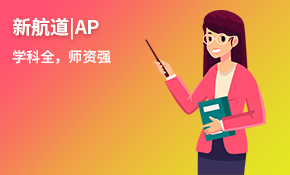托福阅读真题:The Chaco Phenomenon
托福阅读真题:The Chaco Phenomenon
The Chaco Phenomenon
Paragraph 1:A truly remarkable transformation in settlement patterns occurred in the San Juan basin in northwestern New Mexico in the late tenth and early eleventh centuries, with small household farmsteads giving way to aggregated communities centered on communal masonry buildings that are now called “great houses.” These structures are found throughout the basin but are concentrated in Chaco Canyon, where several examples contained hundreds of rooms and reached four stories in height. The largest great house is Pueblo Bonito, with over 600 rooms covering two acres. The entire episode of great house construction in Chaco, the Bonito phase (A.D. 900-1140), was obviously a time of immense cooperative effort. At least 200,000 wooden beams averaging 5 meters long and 20 centimeters in diameter were brought to the canyon from distances between 40 and 100 kilometers away to build a dozen great houses, signifying a huge labor investment and a complex production process. The bulk of construction took place in the eleventh century, but by A.D. 1140 it had ceased abruptly, after which there was a rapid decline in use of the great houses and apparent abandonment of the canyon in the thirteenth century.
1. The word “signifying” in the passage is closet in meaning to ??
O creating
O indicating
O initiating
O requiring
2. The word “ceased” in the passage is closet in meaning to ??
O slow down
O accelerated
O stopped
O changed in style
3. According to paragraph 1, all of the following provide evidence that the Bonito phase was a time of immense cooperative effort EXCEPT
O the large amounts of material needed
O the size of the Pueblo Bonito complex
O the unusual materials used in construction
O the distance the materials needed to be transported
Paragraph 2:For more than a century archaeologists have struggled to understand the circumstances surrounding the rise and collapse of Chacoan society—dubbed the Chaco Phenomenon. In particular, research has focused on determining why such an apparently inhospitable place as Chaco, which today is extremely arid and has very short growing seasons, should have favored the concentration of labor that must have been required for such massive construction projects over brief periods of time. Until the 1970s, it was widely assumed that Chaco had been a forested oasis that attracted farmers who initially flourished but eventually fell victim to their own success and exuberance, as they denuded the canyon of trees and vegetation to build large great houses. In the 1980s this reconstruction was largely dismissed in response to evidence that there had never been a forest in Chaco, and that canyon soils had poor agricultural potential. As scientific interpretations about Chaco changed, the focus of explanatory models changed from the attractiveness of the canyon for farmers to the position of the canyon within a regional network of dispersed agricultural communities.
4. Which of the sentences below best expresses the essential information in the highlighted sentence in the passage? Incorrect choices change the meaning in important ways or leave out essential information.
O Researchers have tried to establish why an area as dry as Chaco was the site of such large construction efforts.
O Researchers have tried to establish whether the concentration of massive construction projects in a brief period of time made Chaco the dry area that it is today.
O Researchers have established that Chaco’s brief growing season required a concentration of labor to produce large quantities of food in a short period of time.
O Researchers have established that the hot, dry climate of Chaco forced workers to complete construction on large buildings in short periods of time.
5. According to paragraph 2, before 1970, scholars believed that Chacoan society collapsed because
O Chaco never had the forests that were needed for the development of a stable agricultural economy.
O farmers used up the natural resources in Chaco that had originally allowed the society to succeed.
O Chaco suffered a long-term drought that prevented farmers from growing enough food.
O laborers left Chaco to find other work after they finished building the great houses there.
6. It can be inferred from paragraph 2 that the pre-1970s theory about the Chaco Phenomenon
O was based on the widespread farm and tool remains found by archaeologists on the site.
O was largely reinforced by findings in the 1980s.
O was not supported by substantial evidence.
O was so strong that it went unchallenged for many decades.
7. The word “dispersed” in the passage is closet in meaning to ??
O connected
O scattered
O stable
O developed
8. According to paragraph 2, why did scientists change their view about the cause of the collapse of Chacoan society?
O They found evidence that Chaco had always lacked trees and good soil.
O They discovered that Chaco Canyon was much drier than they had previously believed.
O They learned that the population was not large enough to supply the laborers needed to build the great houses.
O They found evidence that the farming economy was excessively concentrated in the central canyon.
Paragraph 3:The adoption of a regional perspective in explaining the Chaco Phenomenon was based in part on the discovery of formal trails connecting many of the great houses in Chaco, as well as linking the canyon to smaller great houses located throughout the San Juan basin — the latter are referred to as Chaco “outliers.” These trails are densest around the concentration of great houses in the center, and the canyon itself is roughly at the center of the basin. Consequently, the canyon occupies the geographical and social center of the network formed by the connecting trails. The current consensus view is that religion provides the fundamental explanation for this centrifugal pattern.
Paragraph 4:Archaeologists now describe Chaco during the Bonito phase as a location of high devotional expression and the pilgrimage center of a sacred landscape. These descriptions emphasize aspects of the archaeological record presumed to be associated with ritual activity, including caches of turquoise beads and pendants, unusual ceramic vessels and wooden objects, several rooms with multiple human burials, and especially the large number of kivas (multipurpose rooms used for religious, political, and social functions) found in great houses. Most of these indicators occur only at Pueblo Bonito, but archaeologists generally assume that all the great houses had a similar ritual function. In fact, some scholars have suggested that the great houses were temples rather than residences.
9. According to paragraphs 3 and 4, which of the following best describes how archaeologists arrived at their current view of the nature of Chaco during the Bonito phase?
O They discovered a large number of kivas, which probably served as temporary houses for pilgrims on their way to the main temple.
O They found a series of paths leading to the outliers, which seem to have been centers of trade for makers of jewelry and other products.
O They found turquoise beads and pendants and other valuable objects, leading to the theory that the great houses were wealthy residences.
O They discovered many objects and rooms associated with ritual activity, leading to the theory that Chaco was a religious center.
10. The word “function” in the passage is closet in meaning to ??
O center
O practice
O design
O purpose
Paragraph 5:However, new geological field studies in Chaco have produced results that may require a significant reassessment of the assumption that the canyon was not a favorable agricultural setting. It appears that during the first half of the eleventh century, during the extraordinary boom in construction, a large volume of water and suspended sediment flowed into the canyon. A large natural lake may have existed at the western end of Chaco, near the biggest concentration of great houses. The presence of large quantities of water and, equally important, a source of sediment that replenished agricultural fields presumably made the canyon an extremely attractive place for newly arriving people from the northern San Juan River basin.
11. According to paragraph 5, what is the possible significance of new geological field studies in Chaco?
O They indicate that during the construction boom the Chaco area probably did have enough water and sediment to attract farmers to that area.
O They could undermine the theory of Chaco as a religious center.
O They show the presence of excessive amounts of water, which may have led to the departure of most of the people living there during the Bonito phase.
O They suggest that the kind of sediment present in Chaco in the eleventh century was not favorable for agriculture.
12. Why does the author state that “A large natural lake may have existed at the western end of Chaco, near the biggest concentration of great houses”?
O To suggest that geological studies are better than archaeological studies in identifying the historical uses of land
O To demonstrate that large construction projects require a large population of workers
O To support the idea that Chaco may have been favorable to agriculture during the Bonito phase
O To show that the Chacoan people preferred to build their homes near water
Paragraph 3:■The adoption of a regional perspective in explaining the Chaco Phenomenon was based in part on the discovery of formal trails connecting many of the great houses in Chaco, as well as linking the canyon to smaller great houses located throughout the San Juan basin, the latter are referred to as Chaco “outliers.” ■These trails are densest around the concentration of great houses in the center, and the canyon itself is roughly at the center of the basin. ■Consequently, the canyon occupies the geographical and social center of the network formed by the connecting trails. ■The current consensus view is that religion provides the fundamental explanation for this centrifugal pattern.
13. Look at the four squares [■] that indicate where the following sentence can be added to the passage.
Scholars have attempted to find a reason for this weblike arrangement of great houses around a central canyon.
Where would the sentence best fit? Click on a square [■] to add the sentence to the passage.
14. Directions: An introductory sentence for a brief summary of the passage is provided below. Complete the summary by selecting the THREE answer choices that express the most important ideas in the passage. Some answer choices do not belong in the summary because they express ideas that are not presented in the passage or are minor ideas in the passage. This question is worth 2 points. Drag your choices to the spaces where they belong. To review the passage, click on View Text.
The population of the Chaco Canyon in New Mexico changed significantly between the tenth and eleventh centuries, as evidenced by the remains of its great houses.
Answer Choices
O Before the 1970s, scholars believed that the fail of Chacoan society was caused by farmers’ cutting down all the trees to build their great houses.
O After discovering trails connecting Chaco to surrounding communities, scholars came to believe that there were many forested oases to support those communities.
O Archaeological evidence has led current scholars to believe that Chaco was a religious center during the Bonito phase.
O Archaeological findings indicate that Chaco Canyon was completely abandoned by the end of the thirteenth century.
O Researchers’ findings in the 1980s revealed that Chaco Canyon had been a fertile agricultural area that caused the population near the center of the canyon to increase steadily during the Bonito phase.
O Recent geological studies indicating the presence of water in Chaco Canyon in the eleventh century may alter scholars’ belief that the area was not favorable for farming.
答案:
BCCAB CBADD ACD ACF
分享:新航道托福培训















